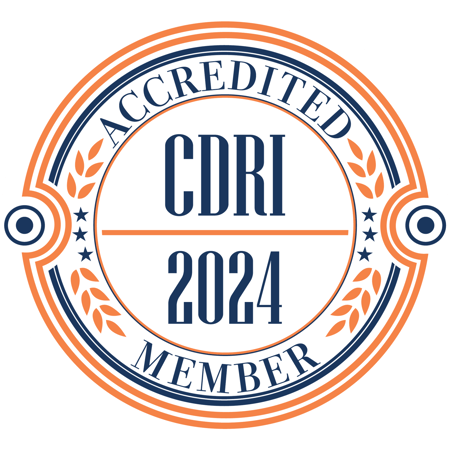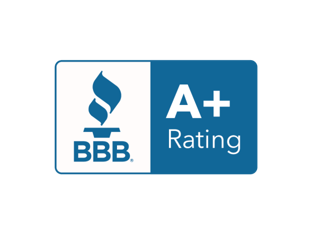Debt relief provides consumers repayment relief so they can get out of debt. Repayment relief can come in many forms like interest concessions, lower payments, and reduction of what’s owed. If you have money coming in every month but are struggling to make all your payments on time or are unable to pay down your debt, getting professional help can be a good idea.
There are five ways to get out of debt and they vary depending on such factors as the total you owe, your ability to pay those debts off in a timely manner, and the stage you’ve reached with your creditors. The longer you wait to take positive action, the fewer options you will have left and the more exposed you could become to a wide range of steadily intensifying collection actions.
A DSP is the only type of debt-relief program, outside of bankruptcy, that can reduce or eliminate a substantial amount of your debt without making payment in full. The concept is simple. A debt settlement company reviews your finances and your debts and identifies which lenders are likely to accept an offer-in-compromise — payment of less than the full balance — in exchange for canceling the debt.
Under the DSP, you stop making payments on the bills identified for settlement, and when the accounts go into default, the debt specialist negotiates a lower pay-off price with the creditor. You pay the settlement amount, plus the debt settlement company’s fee and your debt is gone.
The money for those payments comes from an FDIC-insured escrow account — established in your name and managed by a bank or other third-party service provider. Each month, you deposit an agreed amount of money into that escrow account to fund the debt settlement effort. Those funds represent a portion of the monthly minimum payments you had been making before entering into the debt settlement plan.
Since 2010, it’s been illegal for debt settlement companies to charge upfront fees for their services. Some fly-by-night debt settlement companies still do, and you should avoid them at all costs. Many debt settlement companies, including ClearOne Advantage, never asked clients to pay any upfront fees. They have always received payment once they have concluded favorable settlement agreements on their clients’ behalf. This approach eliminates conflicts of interest and encourages debt settlement companies to aggressively pursue favorable debt-reduction agreements for their clients. It also has improved overall industry performance.
Under the 2010 Federal Trade Commission (FTC) rule, three conditions must be met before a debt settlement company is entitled to its fee:
In 2017, the American Fair Credit Council (AFCC), a trade group representing the debt settlement industry, published “Options for Consumers in Crisis: An Updated Economic Analysis of the Debt Settlement Industry,” an independent report the AFCC first commissioned in 2012. That report covered outcomes achieved for 400,000 debt settlement clients, who signed up for DSPs after the FTC began regulating the industry, in 2010. The report analyzed attempts to settle 2.9 million debts — or an average of 7.25 debts per client. The data covered six years of settlement efforts and found that the average results for all clients (active, terminated, or completed) were that DSPs had produced an average of $2.64 in debt reduction for each $1.00 of DSP fees paid.
The DSP option enables debtors to discharge their debts one at a time — an option not available either through DMPs or Chapter 13 bankruptcies. In those cases, debts are paid down simultaneously, and a failure to complete the program means no debts ever get discharged and collection activity — for the original loan terms — resumes. With that in mind, the 2017 AFCC report found that:
61%
of the no-longer active DSP clients (either because they completed the program or were terminated) settled at least one account. That number rises to 67 percent when still active accounts are included in the mix. And 42 percent of terminated cases settled at least one account.
+96%
of all settlements produced savings greater than the related DSP fees — in part because clients have the power to veto any proposed settlement for any reason.
50%
of all clients that were no longer active in the DSP settled two or more accounts
The longer a client stays in the program the greater the chances the client will complete the DSP. More than half of the clients that stay active for six months or more complete the program. And that rate increases to more than 60 percent for clients that stay in the program for more than two years.
After reviewing the initial debt-relief plan you, the client, would decide whether to retain the debt settlement company to represent you. Then, you would meet with your debt specialist to finalize a list of debts to include in the DSP, work out any remaining details, and open your escrow account. (The escrow account should be FDIC insured and administered by a bank or third-party service firm.) You would have total control over the account and the freedom to withdraw your funds at any time. But if and when you do, the debt settlement program ends.
Your debt settlement company should only include debts in your plan that have a high probability of being settled at a substantial discount. Not all creditors are equally willing to accept debt settlement offers. And your debt specialist should know the companies and their policies. The goal is to limit your exposure by having you stop payment only on debts likely to settle. Quite often, the amount of your monthly DSP payment will be less than the total monthly payment you were making on those same debts before starting the DSP process — leaving you with additional cash on hand.
DSPs allow you to eliminate unsecured debts for amounts lower than your original outstanding balance plus your service provider’s fees. Additional savings include all future interest that you otherwise would have had to pay.
Debt Settlement offers you a better outcome than the all-or-nothing approaches available through DMPs and Chapter 13 bankruptcies. You pay off and discharge your DSP debts one at a time. That way, even if you fail to complete payments for the remaining debts in your DSP, your prior discharges remain valid.
No upfront fees. With DSPs, you only pay for the debt settlements and terms that you approve — and only after negotiations between the debt settlement company and the creditor have concluded. Every other approach to retiring your debts — except for do-it-yourself debt reduction efforts (snowball or avalanche) come with upfront costs.
DSPs apply to all types of unsecured debt, not just credit cards.
DSPs have an equal or better track record of success than many of the alternatives.
You retain total control of your escrow account for the term of the program. The account is FDIC insured, and you can withdraw your funds at any time.
Debt settlement is an adversarial approach to debt reduction. Your creditors do not pre-approve your decision to stop making payments, and not all creditors will settle. Even before your account goes into default, you will incur late fees and penalties that are capped at 29.99 APR. As these fees accrue interest, they could cause your balance to exceed your credit limit, triggering further charges.
Defaulting on your loans will cause your credit to take a significant hit, and records of the defaults will stay on your credit score for seven years. Meanwhile, each settled debt on your credit report will bear a notation of “Paid in settlement.” That negative outcome is better than a notation of “charged-off,” but it will remain on your credit report for seven years from the date of the initial default
There could be tax consequences for your forgiven debt. (See: https://www.irs.gov/taxtopics/tc431). Under the IRS code, if a creditor settles a debt with you outside of bankruptcy for less than the total amount due, that difference is considered income and must be reported on your income tax return. In such cases, the creditor may send you a form 1099-C, Cancellation of Debt form. Exceptions and exclusions exist, and you should speak with a tax adviser about them. If you are in a state of insolvency at the time the debt is forgiven, meaning you have a negative net worth (your liabilities exceed your assets), the IRS will not treat the forgiven debt as income. In all cases, you must attach a form 982, Reduction of Tax Attributes Due to Discharge of Indebtedness, to report the amount qualifying for exclusion.
I thank all of you for helping me in settling my debt, and I have been singing ClearOne's praises since I started. You guys have absolutely exceeded my expectations, and I have already recommended you guys to a few people I know. Thanks for everything!
Enrollment
1-888-340-4697
support@ClearOneAdvantage.com
Hours of Operation
8:00am - 10:00pm (EST) Mon-Fri
10:00am - 7:00pm (EST) Sat-Sun
Customer Loyalty Group (Existing Clients)
Login to Chat
customerservice@ClearOneAdvantage.com
Hours of Operation
Phone: Mon-Fri 9a-8p EST
Chat: Mon-Fri 8a-8pm EST, Saturday 9a-6p EST


©2024 ClearOne Advantage, All rights reserved.
ClearOne Advantage is a registered service mark of
ClearOne Advantage LLC.
ClearOne Advantage, LLC is a debt settlement company, not a lender, loan broker, creditor, credit services organization, or debt collector. ClearOne Advantage, LLC does not assume or pay any debts; receive, hold or control funds belonging to consumers; or provide bankruptcy, legal, accounting or tax advice. You should review full program terms and conditions before enrolling. To the extent that any aspect of the debt settlement services relies on or results in the consumer’s failure to make timely payments to the consumer’s creditors or debt collectors, the use of the debt settlement services: (1) Will likely adversely affect the consumer’s creditworthiness; (2) May result in the consumer being subject to collections or being sued by creditors or debt collectors; and (3) May increase the amount of money the consumer owes due to the accrual of fees and interest by creditors or debt collectors. Not available in all states. Some third-party fees may apply. C.P.D. Reg. No. T.S. 12-03822.
ClearOne Advantage is not a credit services organization and we do not make any claims regarding improvement of a consumer’s credit scores. Entering into a debt settlement program could adversely affect your credit score.
**Disclaimer - We do not charge upfront fees and you do NOT pay our fee until a settlement has been arranged, you approve the settlement, and at least one payment is made towards the settlement. As each situation is unique, fees and costs vary. Please contact us at 888-340-4697 for a free debt analysis and for complete program details.